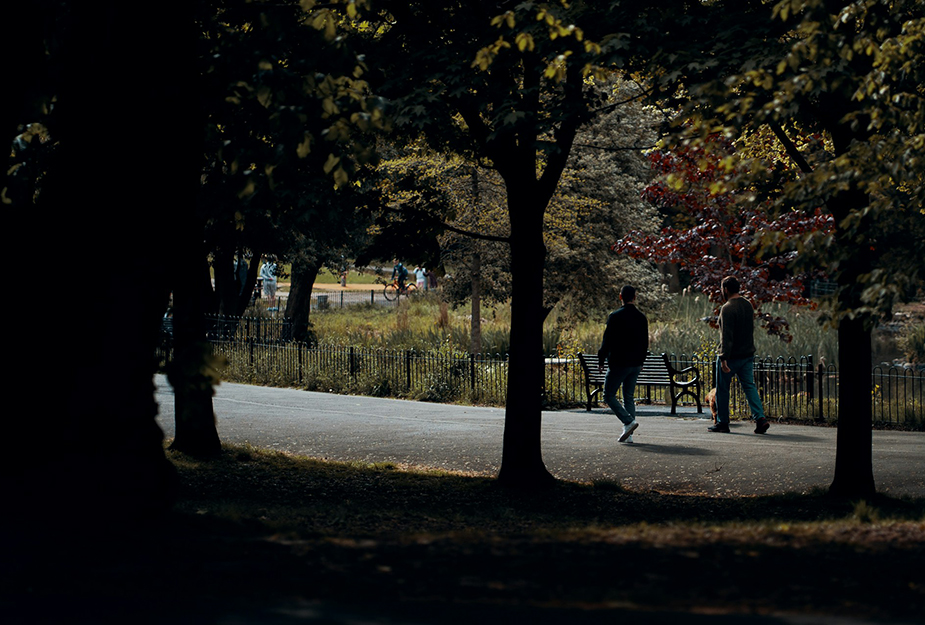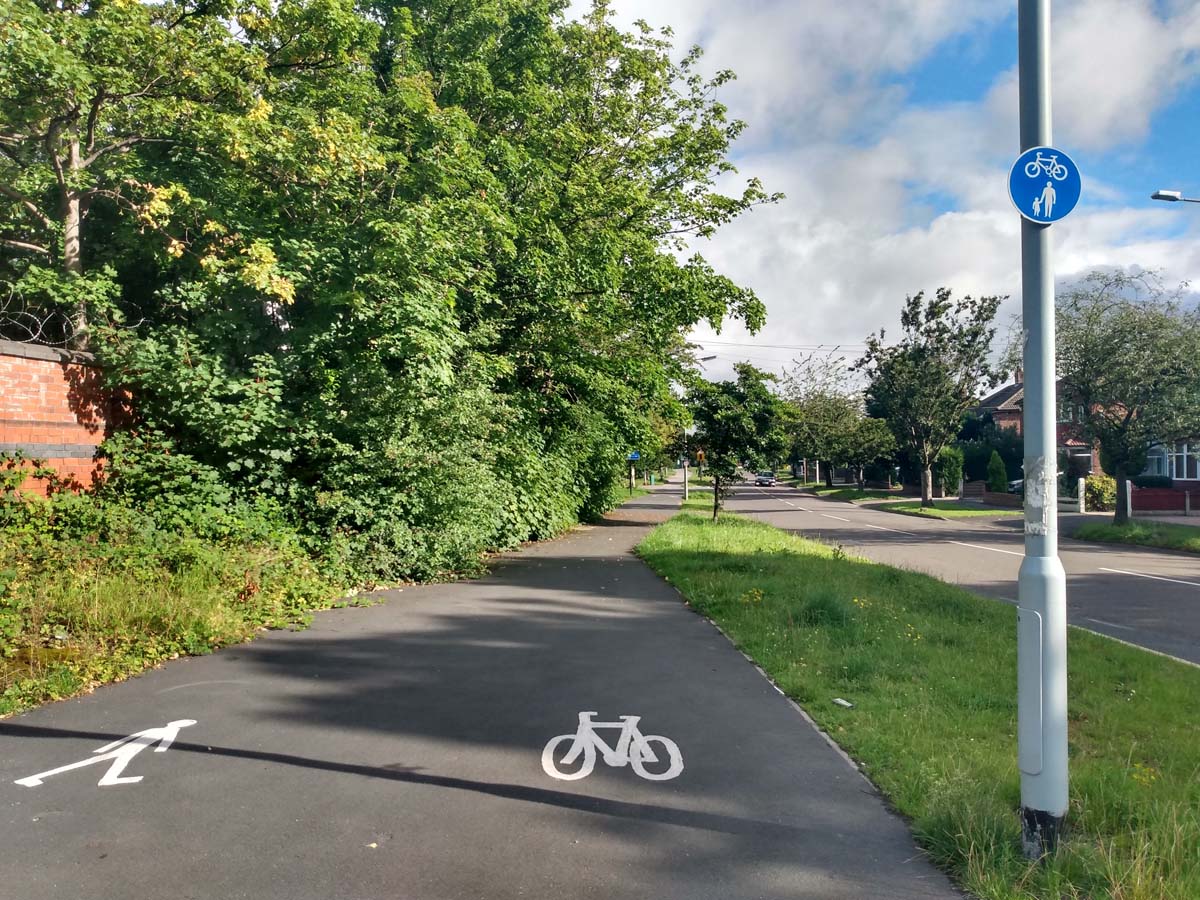How architecture and design can make a positive impact on mental health

At Architecture and Design Scotland, we believe in the power of design to improve people’s lives. In 2022, the Scottish Health Survey by the Scottish Government reported around one in three people being affected by mental health issues in Scotland in any one year.
In this article, we explore how architecture and design can make a positive impact on mental health, particularly around the theme of movement in this year's mental health awareness week.
Effect of the built environment on mental health
Our cities, towns and neighbourhoods are filled with parks, squares, and walkways, but how often do we consider their impact on mental health?
A growing field of architecture and design focuses on creating spaces that encourage movement, fostering not just physical activity but also mental health and wellbeing. Public sector spaces have a unique opportunity to play a vital role in this.
Physical movement has been well-established as a positive for your mental wellbeing. Exercise releases endorphins and dopamine, natural antidepressants that combat stress and anxiety. Public spaces designed with movement in mind can become a catalyst for mental health and support it in several ways.
Connection to nature
Think about our parks. Wide, well-maintained paths create inviting spaces for walking, running, or cycling. Playgrounds encourage children to play actively, foster social connections, and reduce stress. Even well thought out and placed benches can encourage walking loops or quiet moments of reflection amidst nature.
Public spaces can go beyond just facilitating movement. "Pocket parks" – small, strategically placed green spaces – can provide a quick escape from busy urban areas, offering a chance for mindful walking, meditation and social interactions.
Public art installations can serve as waypoints on walking routes, sparking curiosity and encouraging exploration. Interactive elements, like water features or fitness equipment, can further attract people to move their bodies.
According to the Health Research Authority, green and blue spaces have been linked to improvements in physical health, such as a reduction in cortisol levels, blood pressure, and cholesterol. When we socialise in our parks or walk by canals and waterways surrounded by trees, we increase our physical activity levels and breathe in fresh air that surrounds us.

Inclusive and secure spaces
Designing with inclusion in mind is important. Accessible pathways, ramps, and well-lit areas ensure everyone can access the benefits of movement, regardless of physical ability. Consideration of different fitness levels is also important. Walking trails can be combined with designated jogging paths, catering to a wider range of users.
Feeling safe and secure in one's surroundings is crucial for our wellbeing. Design elements that promote clear sightlines, defined entrances and exits, and a sense of place can contribute to the feeling of security.
When we perceive our neighbourhoods, cities and towns as inclusive and safe, it can increase our chances of movement through exploration of our local areas.

Physical movement through local living
Public transportation infrastructure can also be designed with movement in mind. Safe, well-lit sidewalks and dedicated cycling lanes make walking and cycling a viable option, encouraging incidental exercise during commutes. This not only improves physical health but also reduces reliance on cars, contributing to a calmer, less stressful environment.
Shading provided by trees on pavements by streets can also help to make our town centres and urban areas pleasant, increasing the chances for more walking in our places.
Public spaces do not exist in isolation. Consider local living and how we can walk from A to B. A being our home and B being local amenities, services, healthcare facilities, schools and so on. A focus on walkable neighbourhoods that seamlessly connect with public transport and greenspaces creates a holistic approach to promoting movement.
This encourages residents to integrate physical activity into their daily lives, fostering mental wellbeing on a community-wide scale.

Examples of our work
Improving accessibility in Blackburn
In Blackburn, we were able to start climate conversations as part of our Climate Action Towns project, with all parts of the community by talking about public health and wellbeing. To improve accessibility in Blackburn, funding applications have already been made for walking, wheeling and cycling.
School grounds for learning, play and community
Our collaborative project with Learning through Landscape, Climate Ready School Grounds, highlights the importance of outdoor learning and play. As not every child has access to private gardens, nearby parks or area of woodland, it makes sense to not only ensure our school grounds are resilient to our changing climate, but also provide areas for movement through learning and play and connections to greenspaces.
Outdoor Learning Hub Discovery Trail
Developed in partnership with our team, Queen Margaret University and NatureScot, the Outdoor Learning Hub, located on Queen Margaret University grounds was developed as physical spaces for outdoor learning and activity throughout the campus. The Outdoor Learning Hub Discovery Trail offers students, the community, visitors and education professionals a place to walk, learn, grow fruit and vegetables, and socialise amongst nature.
Local living in Stewarton
Our work with Stewarton saw us test the 20-minute neighbourhood approach to their local development framework. By working with East Ayrshire Council and the Scottish Governments Planning Digital Strategy team we are supporting a place-based approach in using Stewarton as a live Site to test the concept using various mapping techniques and data analysis.
Move for your mental health
Mental health awareness week, led by the Mental Health Foundation, runs between 13 – 19 May this year. With their theme ‘Movement: Moving more for our mental health’, they are encouraging us all to take part in physical activity to improve our mental health, life quality and wellbeing. For more information, visit their website here.
Header image credited to Architecture and Design Scotland
